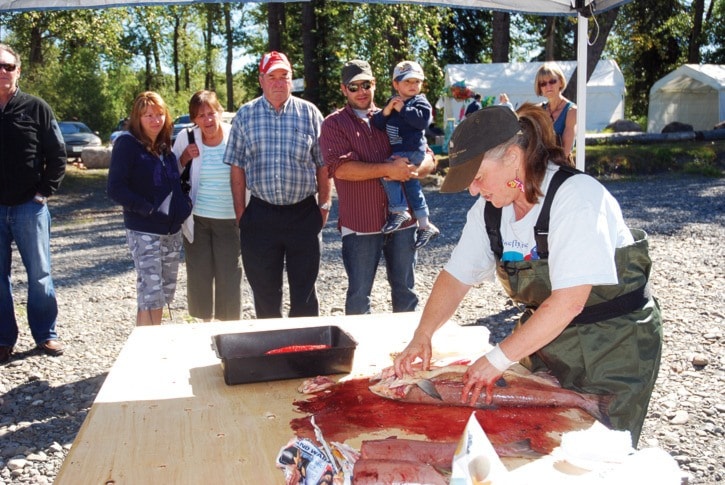The Horsefly River was noticeably short on spawning sockeye last weekend for the annual Horsefly River Salmon Festival.
The small number of sockeye seen spawning in the Horsefly River in recent days is consistent with fisheries projections that sockeye returns to the Quesnel River system will be even lower than the low forecast return for this year, says Les Jantz, Fisheries and Oceans chief of resource management for the B.C. Interior.
The Quesnel River system includes the Horsefly and Mitchell river systems, as well as other numerous small creeks in the Quesnel Lake drainage.
While numbers of sockeye returning to the Chilko, Late Stuart and Stellako river systems have improved considerably over the low escapements recorded in the primary brood year 2007, Jantz says the Quesnel River runs are not showing the same recovery rate.
In 2007, which was a major brood year, the total numbers of spawning salmon returning to Fraser River tributaries was 900,000.
This year, Jantz says the total projected escapement will be around two million by the end of the season with all systems except the Quesnel River system showing gains.
“The Quesnel River system has been behaving quite differently,” Jantz says. “There has been some substantial rebuilding of most other stocks in the Fraser, but it is not happening to the same degree with the Quesnel River stocks and we are scratching our heads as to why.
“The reasons are not clear on why these stocks are not rebuilding the same as those in the other river systems.”
He says the mid-season estimate for all summer run Fraser River stocks were estimated at 1.5 million as of Sept. 5. Estimates are based on fish counts and DNA testing done in all fisheries and at Mission to determine abundance of individual stocks.
The DNA testing tells researchers which rivers particular runs are returning home to spawn in but he notes the estimates are less accurate in determining individual river returns for stocks which are low in abundance.
This summer he says all of the runs have been late due to the very high water levels in the Fraser River.
He says the Chilko River run is now at or just past its peak in the Chilcotin River system and the Mitchell River run, which is traditionally later than other runs, is likely approaching its peak timing in the Quesnel River system.
This week he says there were 2,000 to 4,000 salmon in the Mission count heading for the Mitchell River.
He says the mid-season estimates on total returns for the Chilko River are higher than the original projections at 1.2 million; compared to about 100,000 for the Quesnel River run which is considerably lower than the low numbers expected, and 200,000 for the Stuart/Stellako river runs which are exceeding projections.
He says the numbers are in-season estimates on the total numbers of salmon returning to the Fraser River and include the fish that will be harvested in the commercial, recreational, and First Nations food fisheries both in marine waters as well as in the Fraser River and, the new First Nations commercial fishery in tributaries which is being conducted this year on a demonstration basis.
“Somewhere in the order of 50 to 60 per cent of the total returning fish will reach their intended spawning rivers,” Jantz says, “as the remainder are either harvested in fisheries or suffer en-route mortality.”
While it’s still a mystery why there has been a decline in sockeye, some environment groups believe fish farms, sea lice, or a virus may be possible reasons.
Janz says if the low stocks in the Quesnel River system continue, more research will be needed to determine the cause.
